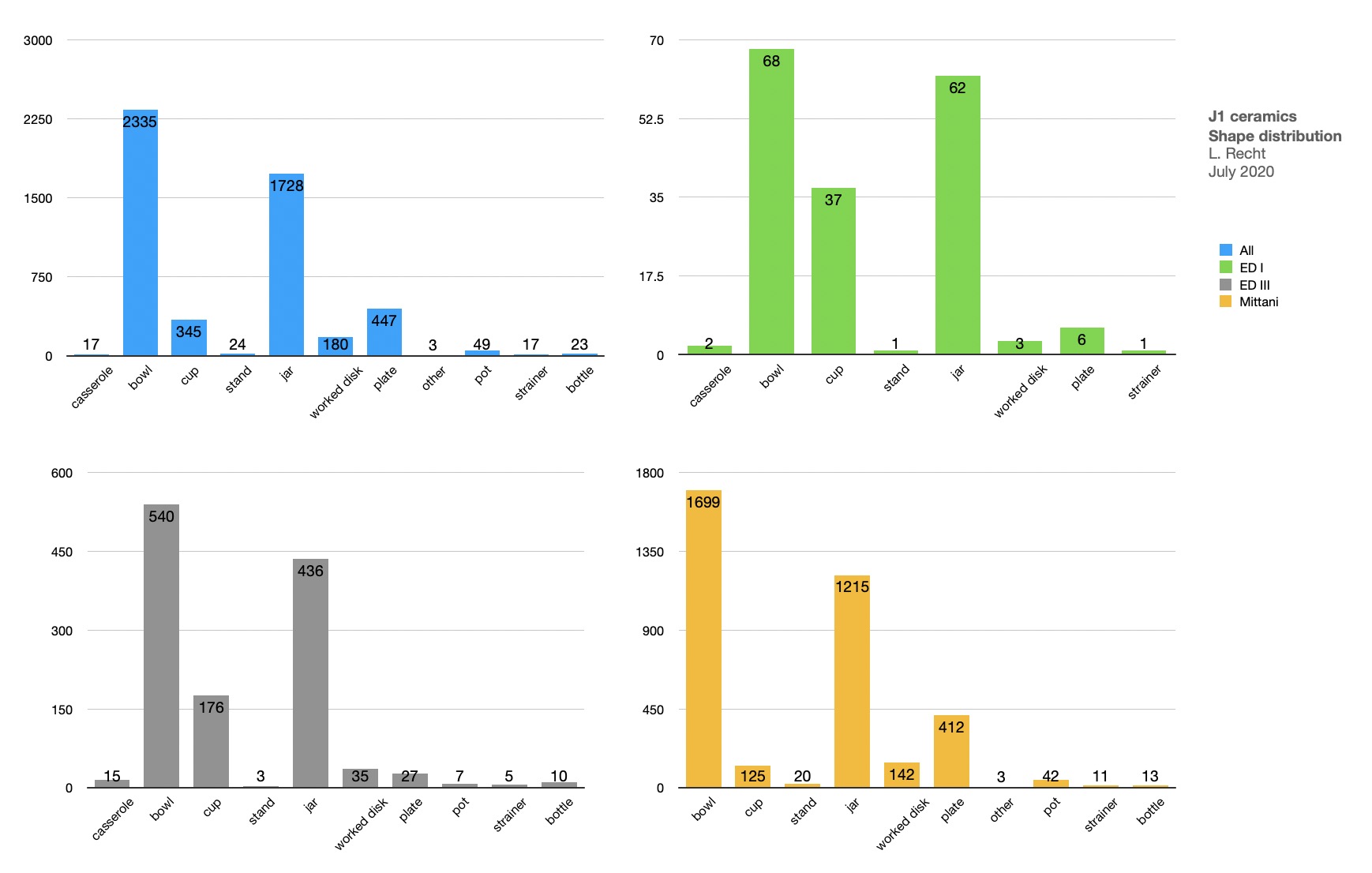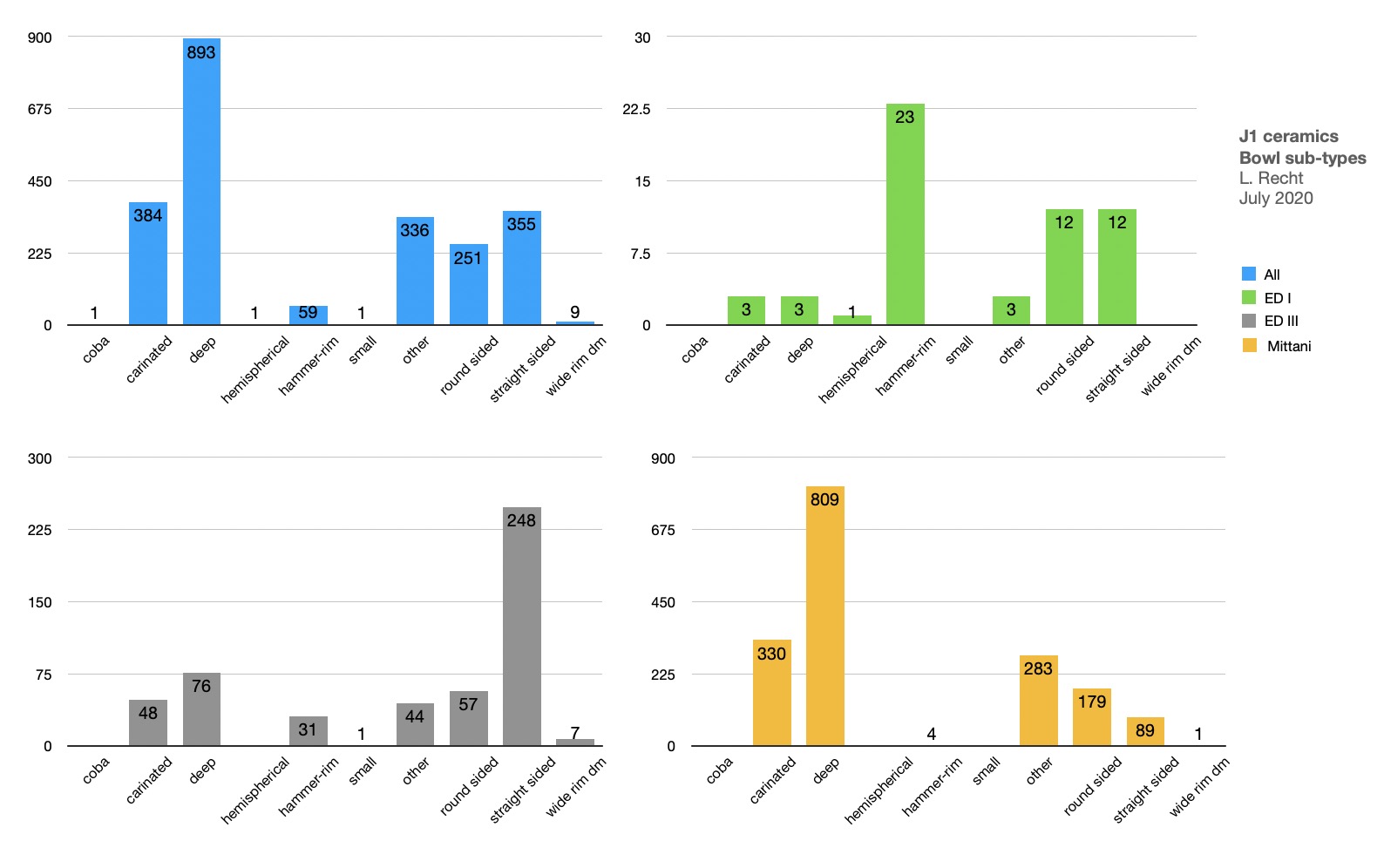Back to top: Ceramics from Unit J1
Methodology and corpus
All ceramic sherds from Tell Mozan are processed according to a standardised procedure in the field, and analysed based on a specific set of typological criteria, supervised by Marilyn Kelly-Buccellati.
A total of 47,336 sherds have been collected and analysed for J1. Of these, 9308 are shape sherds, and 38,028 are body sherds. The individual sherds for J1 can be found in the righthand menu under qp pottery.
The ceramics primarily come from Mittani strata (70.6%), although there are also significant
amounts from ED I (6.6%) and ED III (22.5%). A small number of sherds belong to LC 3 (0.3%) and Middle Assyrian strata (0.0%).

The ceramic material from the earliest phases are associated with escarpment 1 and 2. LC 3, ED I and early ED III sherds were found below escarpment 1 and associated with its construction, while ED III sherds belong with its use. Late ED III sherds were instead found with the construction of escarpment 2. Diagnostic and typical sherds from features belonging to the escarpments can be found in the J1 assemblages 51-74.
Back to top: Ceramics from Unit J1
Wares
The most common ware in all phases is Chaff Temper Ware (CH); this is also the most common throughout the site. The finer version, Fine Chaff Temper Ware (FC) is the second-most common.
For more on wares at Tell Mozan, see CERAMICS book wares.

Back to top: Ceramics from Unit J1
Shapes
Open shapes such as bowls, casseroles, cups and plates/platters are the most popular types in all periods. Among the closed shapes, various types of jars are by far the most common.
For more on shapes at Tell Mozan, see CERAMICS book shapes.

Back to top: Ceramics from Unit J1
Sub-shapes
Looking more closely at the sub-shapes, we can see significant variation. Although the assemblage is quite small, hemispherical bowls are the most common in ED I, followed by round and straight sided version. In ED III, straight sided bowls have taken over, while in the Mittani strata, deep bowls make up the majority, with also a large number of carinated, other and round sided bowls.



*Note: Shapes with less than five examples in total were not included in the statistics here.
Back to top: Ceramics from Unit J1
Assemblages
Some ceramic sherds from J1 have been arranged in assemblages for various points of interest.
The assemblages were born to show specific informations (typical or unusual sherds in a feature/stratum, typical decorations, typical shapes or ware). They are usually belong to a specific feature or stratum, but may also come from several features to show, for example, specific decorative patterns.
For the ceramics at Tell Mozan in general and the typology and stratigraphic characteristics, go to the digital CERAMICS book.
Back to top: Ceramics from Unit J1